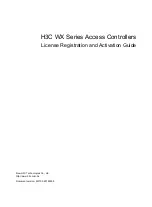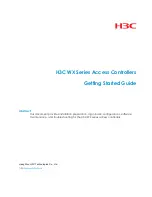
LPC3131/41 Developer’s Kit - User’s Guide
Page 19
Copyright 2012 © Embedded Artists AB
4.2.3
SD/MMC card detect
The pull-up on SD card detect pin is after the power switch. Due to this there is a need to enable power
to the SD/MMC slot to even detect the card insertion.
Note that this problem is fixed on v2.2 of the LPC31xx Base Board.
4.2.4
USB Host applications – power supply
When running USB Host applications where the external USB Device draw a considerable amount of
current (>100mA), the LPC31xx Base Board must be powered with an external power supply (as
opposed to being powered via the USB-to-UART mini-B USB connector). See section 5.1 for details
about the external power supply.
4.2.5
USB Host applications – over current sense
U3 is an over-current protected distribution switch for VBUS (+5V) – for feeding external USB devices.
There is a status flag feedback signal from U3. If this is used (for example by the latest Linux
distribution), a jumper must be inserted in J14, pin 9-10. This will bridge the status signal to pin
I2SRX_WS0.
This jumper is not inserted by default.
If the over-current flag on VBUS circuit is not getting set (in case of an over-current situation) it is a
sign of too weak external power supply. The problem is typically that when the external load is
increasing (on VBUS) the power supply circuit is reducing the output voltage rather than keeping
voltage constant and increase the current draw. Due to this the over-current flag is not getting set and
eventually the complete board can go “down”, i.e., it resets since the supply voltage is out of range. A
possible workaround (if the external power supply cannot keep the voltage at correct level) is to
monitor the VBUS voltage to detect an over-current condition and switch VBUS off when it goes below
a certain level.
















































